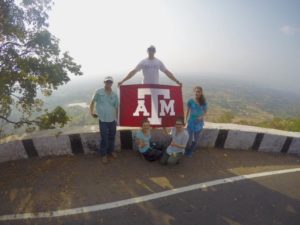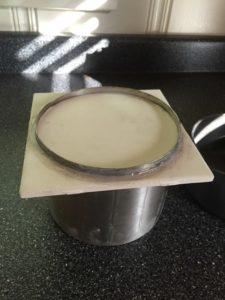
Project: Brackish Water Desalination/Heavy Metal Removal Using Hydrophobic Membrane Technology
Sponsor: Sayeed Mohammed, Founder, Progressive Vellore
Advisors: Dr. Arun Srinivasa, Dr. R. Karthikeyan, Dr. Rabi H. Mohtar
Team Members: Weston Tietze, Travis Moltz, Megan Loveless, Nicole Longtin and Olivia Koerber
Vellore is a small town near Chennai one of the largest cities in India. The people of Vellore face serious challenges in access to clean, potable water due to the leather tanning industries in the area. These tanneries discharge water containing heavy metals into the ground, poisoning it for human consumption. This BAEN senior design team with the help of faculty advisors from Mechanical Engineering and BAEN, are developing a prototype that will help remove heavy metals and other impurities from the water, providing safer, cleaner water for domestic use. The team aims to create a low cost, simple, efficient, robust system that can be built and maintained with locally sourced parts to improve water quality utilizing a non-grid energy source. The system will be sufficiently robust to remove heavy metals from the tanneries and can also be used to desalinate brackish water. Most important: the design will help the town of Vellore to have access to safe, clean water.
The team is charged with building a prototype for a cost effective, efficient system based on a $20/1000 gallons of clean water goal. The prototype must be simple to build and easy for lay workers to maintain. It will effectively remove salts and heavy metals, helping to replenish Vellore’s water resources. The design must be thermally-driven and use no external power source. It should have at least a 5 year life span, and require only cleaning and light maintenance. All design materials must be easily accessible in the Vellore District.
To meet these goals, the team perform research on ceramic membrane distillation and thermally-driven distillation processes and then performed analysis on several design alternatives to enable them to determine a final recommended design. Theoretical calculations and empirical analyses were performed in order to determine theoretical mass flux and energy requirements of the system. A prototype of the final design was completed and tests are being run on simulated water samples. The deliverables include a completed and tested prototype for a proof of concept analysis, and a formal written report showing all calculations and experimental values of prototype output.

 WEF Nexus Research Group
WEF Nexus Research Group